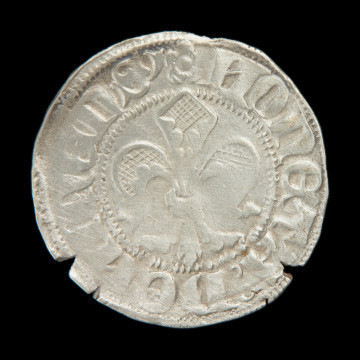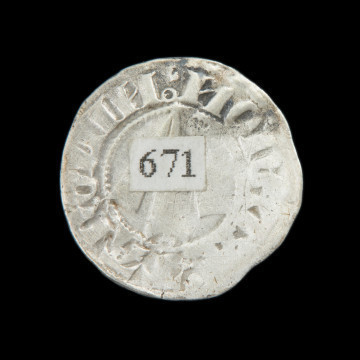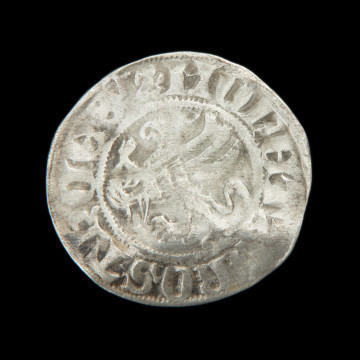
Thcik pfennig
XV wiek
National Museum in Szczecin
Part of the collection: Szczecin treasure from Podzamcze
In the second half of the 13th century the Hanseatic League, uniting the cities of the North and Baltic coasts and supporting each other in trade and economy, was established. In the 14th -15th centuries the Hanseatic League established, among other things, the rights to mint coins. The cities belonging to it flourished at that time. The leading centres were Lübeck and Hamburg. The latter was the most important Hanseatic port on the North Sea. In the second half of the 14th century, the cities, together with Szczecin (Stettin), Greifswald (Gryfia), Demmin (Dymin), Anklam (Tąglim) and Wolgast (Wołogoszcz) introduced a common coin with a face value higher than a denarius. It was witten of the value of 4 denars. A group of wittens minted in different centres of the Hanseatic League was discovered in 1999 during excavations in Szczecin, in the Podzamcze area. West Pomeranian coins predominated among them, but there were also single pieces from Rostock, Lübeck and Hamburg. A coin from Hamburg bears on its obverse the inscription MONETA HAMBURG (the coin of Hamburg) and the image of a gate with three towers and an isosceles cross; the latter image can still be seen in the coat of arms of the city and is its symbol. Pomeranian coins were sometimes decorated with religious sayings. The stamps bear the inscription DEUS BENEDICTUS (God has blessed) and an isosceles cross, which is often found on late gothic coins as the symbol of Christian faith.
Małgorzata Peszko
Dimensions
cały obiekt:
Object type
coin
Creation time / dating
Creation / finding place
Identification number
Location / status

XV wiek
National Museum in Szczecin

XV wiek
National Museum in Szczecin

1405 — 1449
National Museum in Szczecin
DISCOVER this TOPIC
National Museum in Lublin
DISCOVER this PATH
Educational path